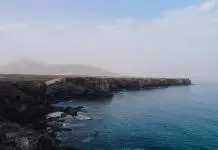Travel to Morocco
Located in North Africa, Morocco’s coastline borders both the North Atlantic Ocean and the Mediterranean Sea. Neighboring countries include Algeria to the east and the Spanish North African territories of Ceuta and Melilla.
For Western travelers, Morocco is an endearing travel destination. The idea of Morocco holidays is filled with thoughts of colourful markets, rich scents of spices, flavourful food, intriguing culture and incredible landscapes.
While there is a modern atmosphere in the cities of Rabat and Casablanca, other Morocco cities are still deeply rooted in its past histories. Fez, often regarded as one of the best cities in Morocco, is still rooted in medieval times. Marrakesh, the fourth largest Moroccan city, again still portrays a rich history. Here, you can visit many of the old mosques and madrasas as well as experience the many red sandstone walls throughout the city – which is how the city got its nickname of “Red City.”
With such a diverse landscape it’s always a good time to visit, however the best time to visit Morocco is during the shoulder seasons. April to May or September to November is when the weather is not too hot or cold and there are fewer tourists. However, if you’re looking to do specific activities like hiking the Atlas Mountains or surfing, then you’ll need to go at specific times suited to those activities.
This guide is here to provide you adequate travel in Morocco advice and enough information to start planning your Morocco itinerary. If you’d prefer to join one of the Morocco tours rather than plan your own itinerary, we recommend looking into the Morocco tours with Contiki, Intrepid Travel and G Adventures.
Read our top Morocco travel tips.



























